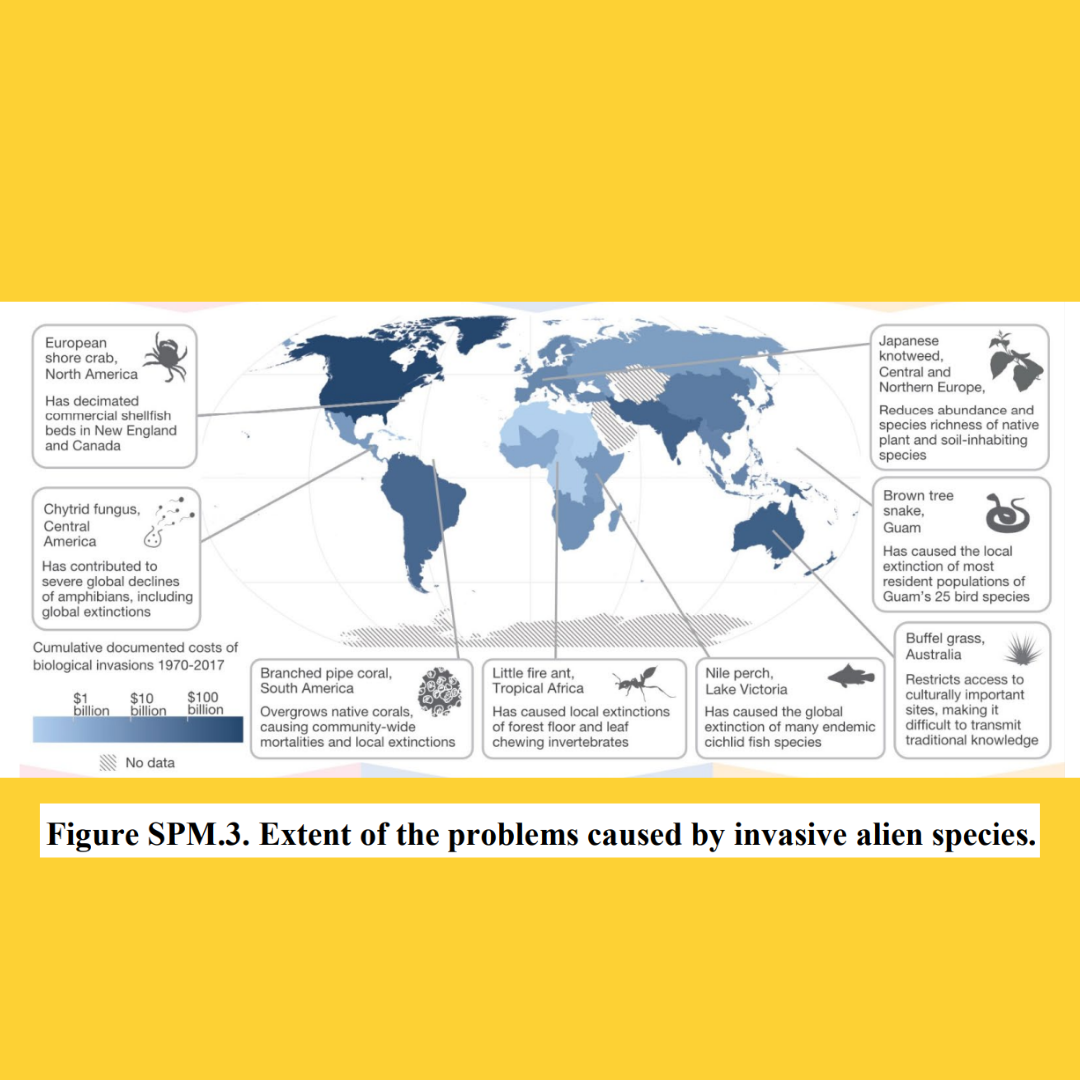IPBES, Summary for Policymakers of the thematic assessment of invasive alien species and their control.
The Intergovernmental Platform on Biodiversity and Ecosystem Services has released, a Summary for Policymakers of the Assessment Report on Invasive Alien Species and their Control approved on Saturday 2nd September by representatives of 143 member States.
The Summary provides key information on the pathways to adopt for better management of biological invasions. In fact, invasive alien species are recognized as one of the five major direct drivers of change in nature globally, alongside land- and sea-use change, direct exploitation of organisms, climate change, and pollution. It also provides the main conclusions of the most comprehensive assessment ever carried out of invasive alien species around the world. 
Here we have summarized some of its central points:
-
Invasive alien species are a major threat to nature, nature’s contributions to people, and good quality of life

- Globally, invasive alien species and their impacts are increasing rapidly and predicted to continue rising in the future
The threats from invasive alien species are increasing in all regions of Earth and are predicted to do so in the future. Even without the introduction of new species, existing populations of invasive alien species will continue spreading through all ecosystems. Amplification of and interactions among direct and indirect drivers of change will profoundly shape and exacerbate the future threats from invasive alien species.

- Invasive alien species and their negative impact can be prevented and mitigated through effective management
Curbing the rising number of invasive alien species and reducing their spread and impact are achievable through management actions in the short as well as long term. There are many decision frameworks and approaches for supporting management of invasive alien species at all stages of the biological invasion process. Prevention is the best option but early detection, eradication, containment and control are also effective in specific contexts. Management of biological invasions benefits from engagement with stakeholders and Indigenous Peoples and local communities.
Better management of biological invasions includes the development of decision support tools; prevention (supported by regulation) and preparedness planning and actions; eradication, containment, and control of invasive alien species; site- and ecosystem-based management; and ecosystem restoration. 
- Ambitious progress to manage biological invasions can be achieved with integrated governance
Lastly, one of the greatest threats to biodiversity, invasive alien species can be overcome through a context-specific integrated governance approach of biological invasions, including well-resourced, coordinated and sustained strategic actions, with closer collaboration across sectors and countries. Managing biological invasions is realistic and achievable, with substantial benefits for nature and people. Public awareness, commitment and engagement and capacity-building are crucial for the prevention and control of invasive alien species. Advances can be achieved through adequately and sustainably resourced public awareness campaigns, education, citizen science, and targeted investment in research innovation and environmentally sound technology. Public engagement with citizen-science platforms or community-driven eradication campaigns can raise awareness and contribute to action that reduce the threat of invasive alien species. This can also be aligned with efforts to establish shared efforts and commitment and understand the specific role of all actors. Communication strategies based on evidence can help to bring about community action on biological invasions by supporting the co-design of management actions, knowledge exchange and enhanced partnerships among stakeholders.

Source: Watson, R., Baste, I., Larigauderie, A., Leadley, P., Pascual, U., Baptiste, B., ... & Mooney, H. (2019). Summary for policymakers of the global assessment report on biodiversity and ecosystem services of the Intergovernmental Science-Policy Platform on Biodiversity and Ecosystem Services. IPBES Secretariat: Bonn, Germany, 22-47.
